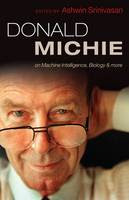Maybe, but it's better to be hypocritically active than honestly inactive
Hypocrisy is a useful tool for environmentalists. Show the world that Shell is tearing up the sands of Alberta and the world shrugs. Show the world that Shell is tearing up the sands of Alberta, and at the same time advertising themselves as a green company, and the world pricks up its ears. Dishonest wrong-doing carries more weight than mere wrong-doing.
But hypocrisy is one of those tools that can easily turn on its users. Those who make moral claims are expected, on pain of hypocrisy, to back them up with unambiguous action -- environmentalists included.
This is fair enough, but sometimes it seems to go too far. Tell someone you've quit meat to reduce carbon emissions, and friends and foes alike will wonder aloud why you are still driving a car, buying imported fruit, etc. etc. Spend a year living cashfree and a mob of commenters will call you a hypocrite for submitting a blog post by broadband. It seems that people who try to do good, and succeed imperfectly, are more guilty than people who don't try at all. Is this fair?
The hypocrisy of some actions is indisputable, and indisputably a vice. Shell's hypocrisy is worse than mere wrong-doing because it is a lie designed to downplay the extent of their wrong-doing. Is it just as bad to be a selective environmentalist, one who picks and chooses their good works depending on what is convenient for them (assuming that leaving a Western-sized carbon footprint is a wrong-doing)?
There has been a lot of scholarly ink spilt on the nature of lying and on whether or not wrong-doers forfeit their right to complain about the actions of others. Which is to say that it would be easy to get one's knickers in a philosophical twist on the topic of hypocrisy.
But the following points seem to me salient, obvious, and within the grasp of people (like me) who want to think about this issue but do not want to think too hard.
Firstly, it is not a good thing for an individual to be deluded about the extent of the harm he inflicts on the world, for the simple reason that such an individual is less likely to reduce the harm they inflict.
Secondly, in at least some cases it is wrong for an individual to deceive others about the extent of his wrongdoing. If I put it about among Ethiopians that I was down to 1.2 tonnes of CO2 a year when in fact I was not, then I would be a lot like Shell when they put it about among Britons that they are a clean company when in fact they are pumping Alberta's dirt into the atmosphere.
Thirdly, a person who takes some action to reduce their carbon footprint, but not all possible action, does not automatically deceive himself or anyone else. It might be perfectly clear in his mind that his actions are of real but limited use, and he may never lead anyone to believe otherwise.
Fourthly, it is better to take some good action on climate change, and be a bit deluded or dishonest about the value of those actions, than to take no action at all now or in the future. A population of frank and knowing individuals is not much use if none of them reduce emissions.
Fifthly, and finally, the fear of being called a hypocrite should not stop people from making incremental changes to their lives in the interests of the environment (or in the interests of any other worthwhile cause). The fear of being a selective environmentalist should not turn people into timid environmentalists. The alternative is damaging, absurd, and selfish.
It would be damaging because most environmentally-friendly action by individuals will be step-by-step action. Wipe out incremental action and you wipe out most action.
It would be absurd because the charge of hypocrisy assumes that the accused party has some wrong-doing to hide: I would be a lier, but not a hypocrite, if I said I would do five handstands but only did three. So if the fear of being hypocritical has any bite, it should urge us to take more action, not less.
And it would be selfish, because -- if Lord Stern and the IPCC are even half-way right -- the social inconvenience of being called a hypocrite is minute compared to the harm that will be avoided if individuals take real action on climate change. Hypocrisy on climate change is a bad thing, from Shell or anyone else. But inaction is much worse.


